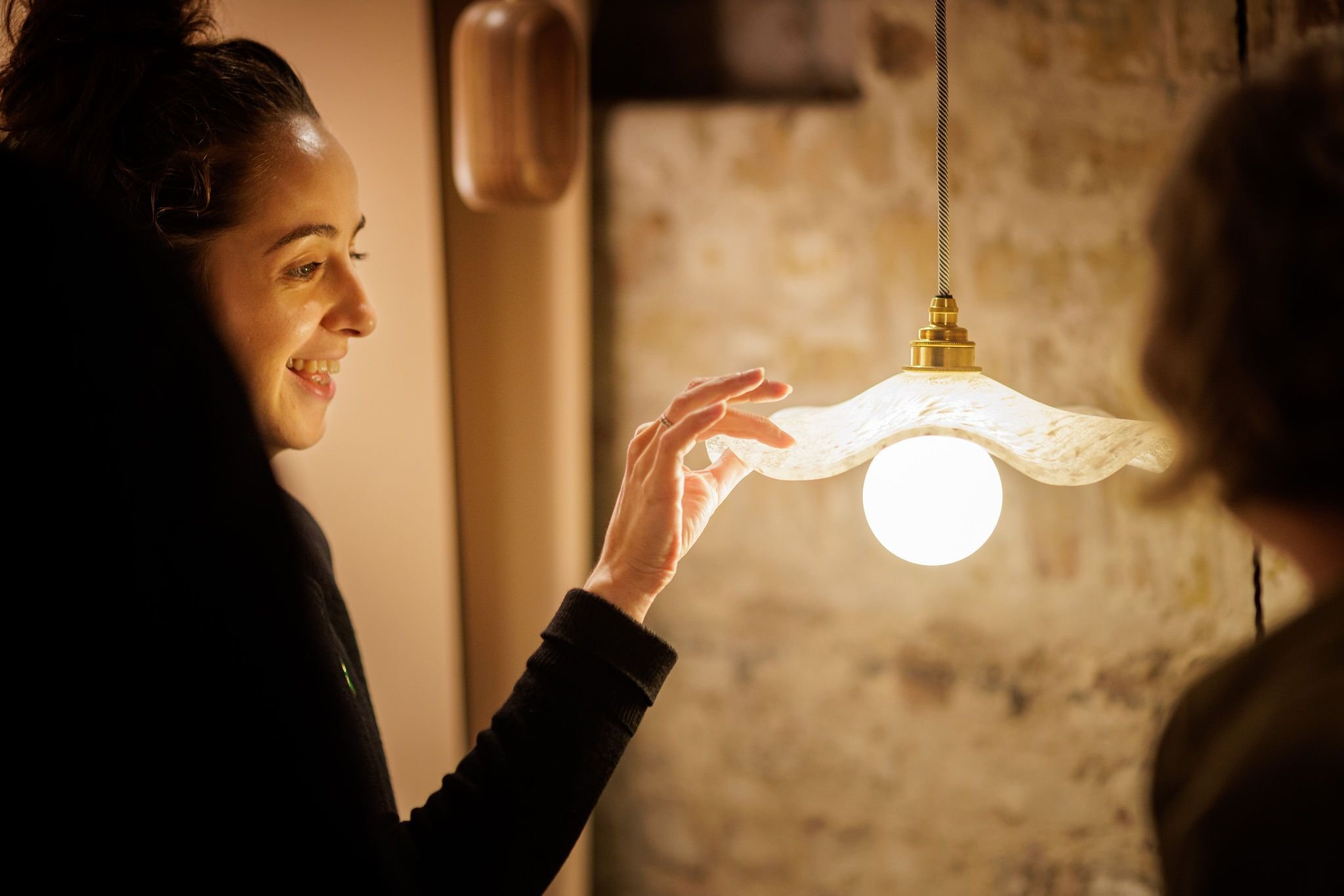A Sustainable Future: What we Learned at Clerkenwell Design Week 2024
Clerkenwell Design Week (CDW) returned to London for its 2024 edition, marking its 15th year as a global design festival. With more than 600 curated events and 160 local design showrooms it brought together the most innovative thought leaders and pioneers in design.
Among the many topics discussed, the themes of sustainability and wellness took centre stage this year. The festival included wellness hubs, discussions about nature in design, and exhibitions showcasing the latest innovations in recycled materials. Here’s our round-up of the most interesting lessons we learned around sustainability, wellbeing and what the future holds for sustainable living.
Domus’s talk on timber (Image from Domus)
Timber’s evergreen appeal
During an enlightening session led by Domus Tiles, timber emerged as a perennial favourite due to its durability and sustainability. Timber construction not only stores carbon, reducing greenhouse gases, but also promotes a sense of wellbeing. This is largely due to biophilic design principles, which suggest that humans have an innate affinity for nature. Domus pointed out a notable example of timber's potential is the Black and White Building in Shoreditch, an office space and the biggest timber structure in the city which showcases the material's versatility and demand.
The regenerative wonder of cork
Domus hailed cork as the most sustainable wood - harvested without felling trees. This regenerative process involves stripping the bark from cork oak trees, which regrows within seven years, allowing for repeated harvests. The method may offer some inspiration to those pursuing sustainable harvesting practices that minimise environmental impact while maintaining the health of the tree.
The timeless durability of porcelain and ceramic tiles
There are lessons to be learned from ancient structures still standing today. Many of these buildings are testament to the longevity of porcelain and ceramic work and indicate that sustainable design can often involve looking back at time-tested methods. With reference to the ancient world, Domus showcased their more modern, slim porcelain tiles which are 50% thinner than standard tiles. These lighter versions can reduce carbon emissions associated with transportation and installation by as much as half.
Recycled materials in composite, glass and mosaic tiles
Bolon’s vinyl floors are 68% recycled and have 0% climate impact. One such flooring where we saw innovative uses of composite and glass mosaic tiles, was made from 100% recycled materials, which highlights some of the more creative approaches to sustainability in design. These tiles incorporated various stones and recycled glass bottles, which transformed the waste they were made from into some aesthetically pleasing and functional building elements. These tiles represented a way people can reduce landfill waste but showcase the potential for high-quality, sustainable building materials.
Recap of the event (From Domus)
The power of proximity in shopping local
A discussion that resonated with us and our own processes at Beams was the Design Council’s talk on Mass Circularity as sourcing materials locally can be a straightforward yet effective way to reduce the carbon footprint of construction projects. By choosing suppliers close to the site of construction, transportation emissions are significantly reduced. It can also reduce costs in having to ship from further afield, and make it easier to keep to timelines for renovations and construction.
Product declarations: transparency and accountability
A document not commonly talked about, Domus discussed product declarations which provide detailed information on a product’s environmental impact throughout its lifecycle. For environmentally conscious consumers and professionals, these declarations help to make informed decisions. Companies committed to sustainability also need to be transparent about their products’ carbon footprints so these declarations also help to create trust in the industry and in forward-thinking practices.
Embracing recycling and repair
During the Design Council talk, they shared that an often overlooked but vital component of sustainable design is effective waste management. The principle of recycling and repairing materials rather than disposing of them plays a crucial role in minimising environmental impact from the renovation of homes. These home renovations can actually act as a great opportunity to re-use materials like brass and tiles bringing them back into a new lifecycle somewhere else.
Domus’s David Kong gave a talk on design and wellbeing
Improving health with natural design
One of the most compelling arguments for sustainable materials is their positive impact on human wellbeing. Natural materials, such as wood, were shown to enhance mental and physical health. The Incredible Impact of Plants on Wellness talk, from Plant Plan explored the concept of biophilia, which refers to the inherent human inclination to connect with nature. Living in environments that incorporate natural elements like timber can promote a sense of tranquillity and happiness. They indicated that these environments reduce stress and improve overall wellbeing, highlighting the importance of integrating nature into our built spaces.
A canine attendee enjoys the Brick From A Stone exhibit (Credit: Ivan Jones)
Conclusion
Among its many other exhibitions and discussions, Clerkenwell Design Week 2024 reinforced the notion that wellness and sustainability in design are not just complementary but inseparably linked. By choosing sustainable materials, sourcing them responsibly, managing waste effectively, and prioritising the use of natural elements, we can create spaces that are not only environmentally friendly but also conducive to human health and happiness.
Beams is committed to creating beautiful, sustainable spaces
At Beams we take a particular interest in innovative designs that help people and the planet. That’s why we commit to using recycled materials wherever we can, we use local manufacturers to reduce our supply chain and we ensure that our waste and bi-product gets recycled into our next build.
If you’d like us to guide you through the home renovation process, from design to the completion of the work by our vetted contractors, then get your free estimate today:





